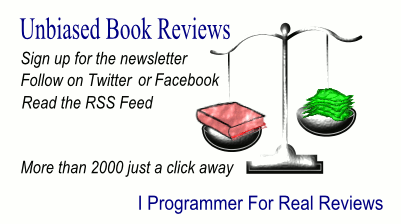| Head First jQuery |
|
Author: Ryan Benedetti & Ronan Cranley
JQuery is a framework with a very logical structure. Can the typically "non-linear" approach of a Head First book help you understand it? This is an introduction to JQuery for the beginner. It is in the usual "Head First" style with lots of asides, exercises, comments, silly photos, quizzes and so on. Surprisingly, this approach works reasonably well for JQuery mainly because it helps to introduce the JQuery selectors using lots of graphics. When it comes to more general aspects of programming, you have to ask the usual question of can this sort of non-linear approach convey the most linear and logical of subjects. Some readers seem to think it can.
Ignoring the usual fairly long introduction to the Head First method and the book in general, the book really gets started with an overview of the web, the way HTML/CSS works and why you might want to add a script. The first example introduces both scripting and jQuery and, given how standard a use of jQuery is, this isn't unreasonable. Chapter 2 dives into the use of selectors, and this does succeed in making something that can be difficult seem easy. Chapter 3 moves into actually using jQuery to make things happen on a page, so we learn about events and how to change the way things look. Chapter 4 introduces the DOM and how to make use of it to create a dynamic page and Chapter 5 extends this with a look at using animation and special effects. The following two chapters build on these ideas and introduce more JavaScript and general techniques. Chapter 8 takes us into much more difficult waters - Ajax. The big problem with Ajax is that it involves the server side as well as the client. The initial chapter on Ajax simply explains the client side and Chapter 9 deals with a PHP server side and the generation of JSON data. It is unusual for a beginner's book to treat both client and server and this is good, but be ready to get your head around PHP as well as JavaScript - it isn't that hard. The final two chapters deal with wider issues. The first of these, jQuery UI isn't always considered a full member of the jQuery family - it probably should be. The final chapter is an example involving the use of the Google Maps API. There are lots of things this book doesn't cover and it even volunteers a few suggestions at the end. Its biggest omission, however, is jQuery Mobile, which is becoming increasingly important. It also doesn't cover form validation, UI effects, plug-ins and advanced JavaScript. All of these are reasonable as long as you keep in mind that this is a beginner's book. Overall this book works well as long as you like the Head First approach. It is easy to read and it manages to explain things that beginners do find difficult in a way that makes them much easier. Be warned however, that this is not a concise introduction and it usually tells you the same thing more than once. You either find this approach slow or ideal depending on your starting level. So not for the expert programmer trying to find out quickly about jQuery, but it might be ideal for the beginner struggling with code for the first time.
|
|||
| Last Updated ( Wednesday, 11 January 2012 ) |
